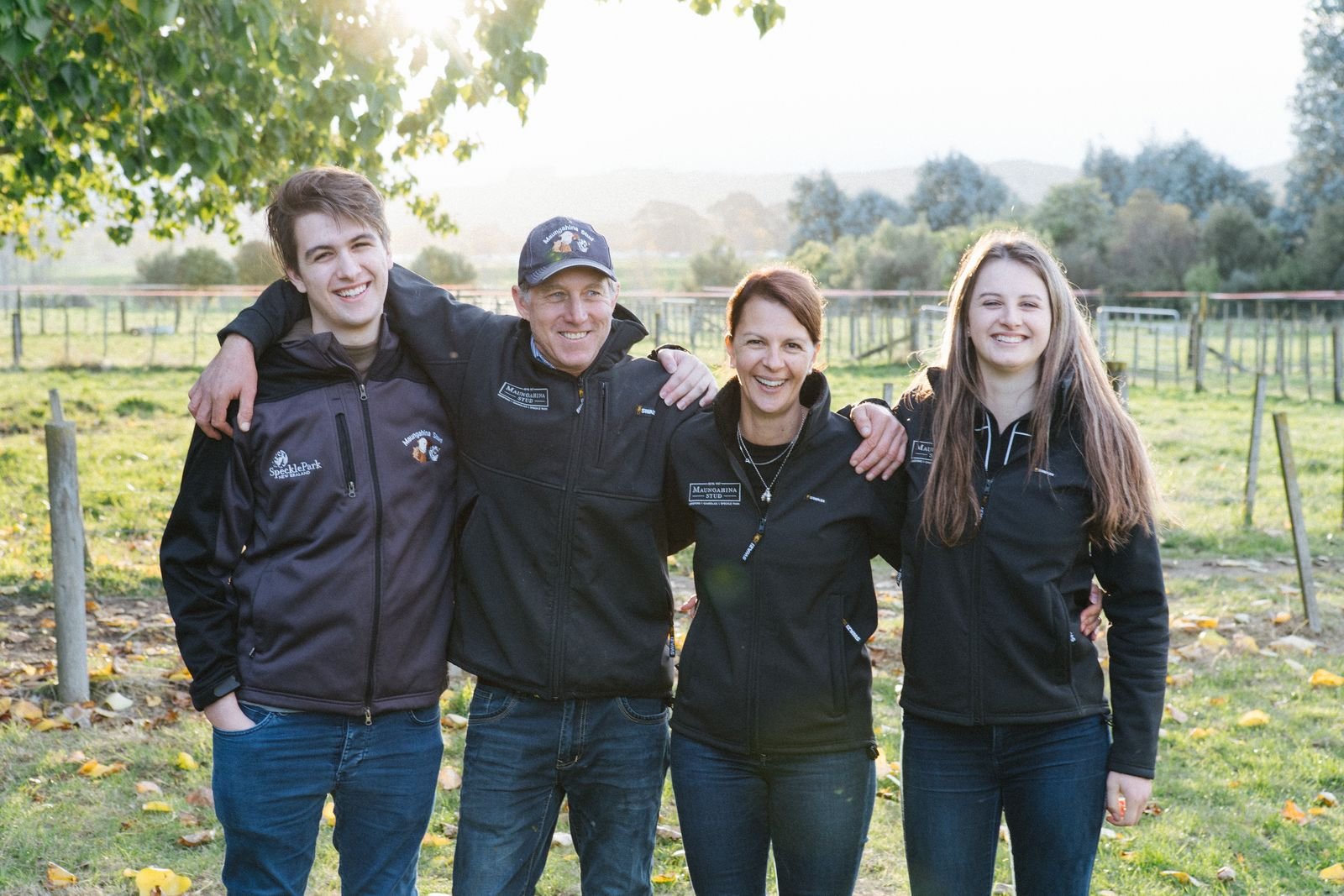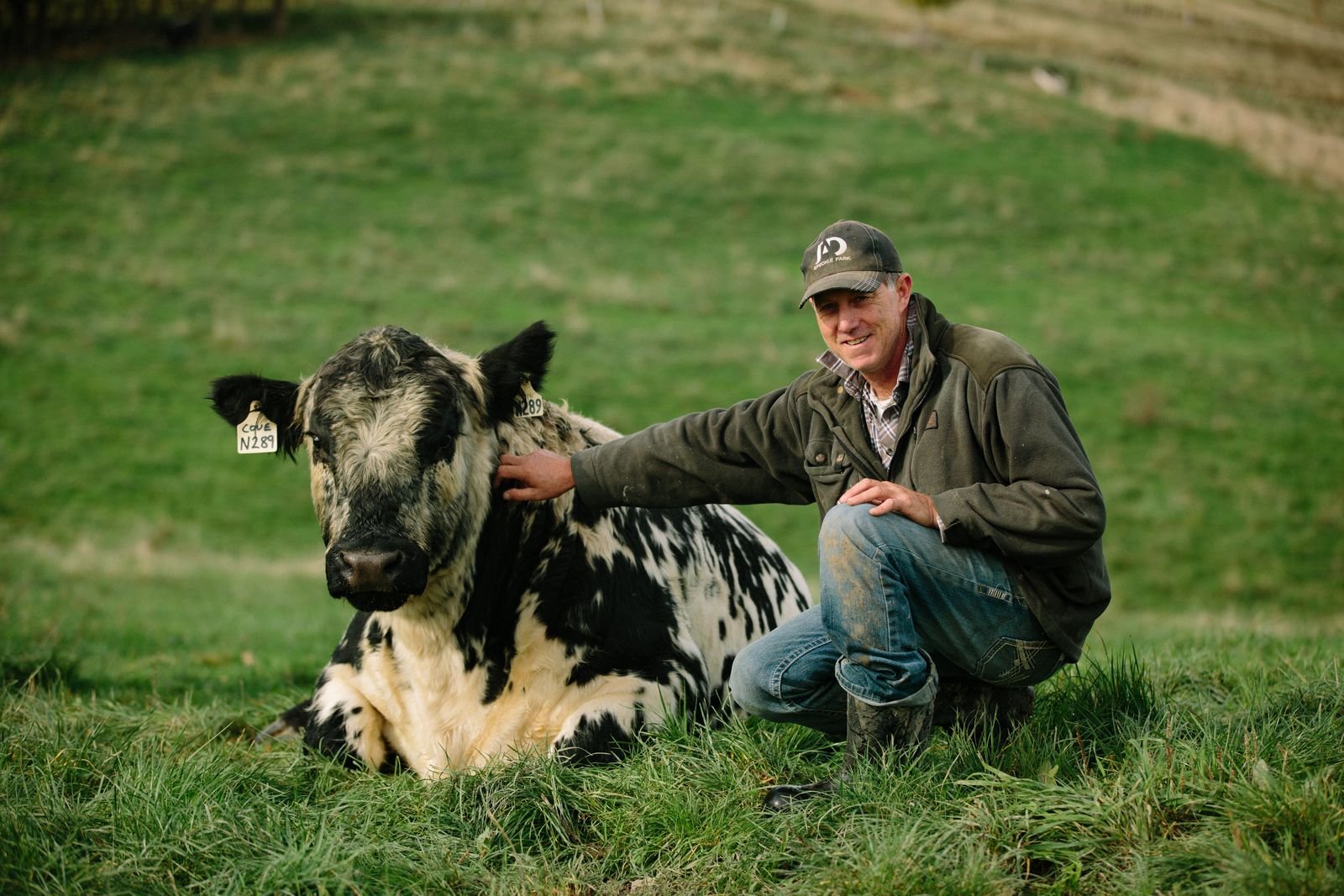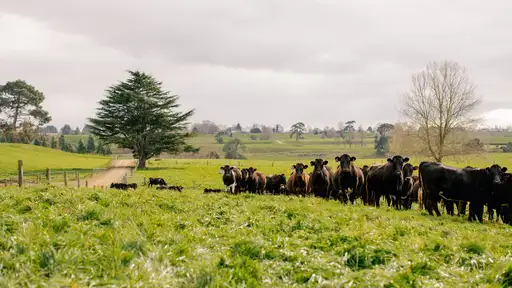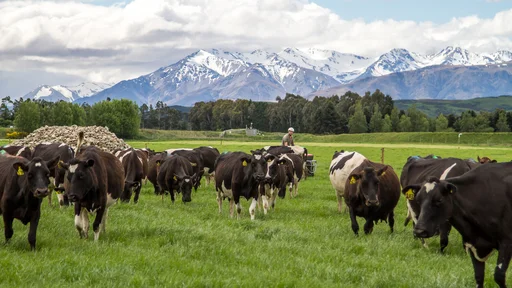Mark McKenzie took a big risk when he brought the Speckle Park cattle breed to New Zealand a little more than a decade ago.
"We knew the breed went well in Canada, and we knew it had also gone well in Australia, but they were grain-fed animals which thrived in completely different conditions" Mark says.
"We didn't know how it would go on pasture, but we had a good feeling about it."

That feeling was perhaps bourne from observations the breed was incredibly hardy.
In Canada, where temperatures can get as low as -40 degC, Speckle Park cattle were proven performers.
And in Australia, where temperatures can get as high as +40 degC, again the cattle were proven performers.
Climate wasn't going to be a factor, Mark says; "They have very thick hides on them."
"So bringing it here, to breed and grow on a pure pasture diet, on what is hilly, rolling country, was a relatively new venture for the stud, but it's been a hell of a journey," Mark says.
The DAIRY factor
Mark and his wife Melissa, together with their son Jack, 20 and Molly, 17 are the fifth generation McKenzie family to run Maungahina Stud near Masterton.

The McKenzie family - Jack, Mark, Melissa and Molly
It's at Maungahina that sheep and commercial cattle are raised alongside Maungahina Hereford and Speckle Park bulls (for annual private auction).
"In grass fed beef, we have such a great product here in New Zealand, and we've found these cattle marble well on grass," Mark says of the Speckle Park breed.
"Initially we brought them in to just try, but the business has just skyrocketed and it now represents an important income stream for us.
"The dairy industry has been a massive success factor, with the interest in the breed really taking off."
When the stud first turned to supplying the dairy industry it sold about 200 straws. Today, more than 30,000 Speckle Park straws are supplied to dairy farmers per year through the exclusive arrangement with LIC during a season.
"In my local area I drive down the road and see Speckle on every second dairy farm I come across. Five years ago there were only one or two farms where you'd see that throughout all of New Zealand. Obviously the word has got out."
What's the appeal?
Dairy farmers have seen their striking colour, Mark says.
"That's a big advantage, people love that, but they're also impressed by their lower birth weight, and they're very vigorous at birth so their survivability on the hill country is incredible."
"When they’re born they get up on their feet so quickly to get a drink, most within about minute. For the rearers that’s important, they’re so quick to get on to the feeders to suckle. “At weaning, their weights are ahead of other breeds by 20-30 kgs,” Mark says, “which shows if we pick them right they’re great converters of feed. And we know what genetics work and what won’t.”

Mark with one of the farm's Speckle Park bulls
Genetic differentiation
The myostatin gene carried by some of the bulls was a great point of difference too, Mark says.
“We test for it, and we want to breed from this gene. If we select for this we’ll get high yield, high carcass, early-maturing cattle.”
“In 18-20 months, they’ll be off the grass, off to kill, meaning the farmer doesn’t have to carry it for another winter. This is what this breed does.
They are high-yielding cattle, so they’ll provide more bang for buck than most other breeds.” Mark says the grain diet of Australia and Canada might give the meat tenderness, but New Zealand's pasture diet provides incredible taste.
“With the myostatin gene they carry, the meat is so much softer than any other breed, that’s the feedback we’re getting from butchers. It’s a hell of a meat animal. They're marbling incredibly well and crossing very well over a dairy animal, and are delicious to eat. I know several butchers who are going specifically after dairycross Speckle animals. They’re mad about it, that’s how good they are.”
Mark says New Zealand’s conditions mean his stud has been particularly strict on the Speckle Park cattle's structure. “That comes down to the skeleton of the animal – they’ve got to be able to walk on hills, perform like any other beef breed, so our culling-out rate has been huge just to get the right-structured animals for our conditions.”
“But it’s exciting times as a stud because there’s a lot more numbers,” Mark says, “and we know a lot more about the cattle, and I believe it’s only going to get better and stronger. We’re investing in embryo technology, and have put in more than 1000 of them over the last decade, and will continue to do so. The partnership with LIC has been mutually beneficial.
“For a while now we’ve concentrated on meat and structure, but focus will soon turn to gestation length, that’s our next stage, and we want more consistency with the breed.”
Maungahina Stud
- Maungahina consists of three properties: Maungahina, 600ha rolling hilly lime stone country 8km east of Masterton; Papariki 50ha, east of Masterton all under k-line irrigation, and; Miki Miki, 220ha, 18km north-west of Masterton.
- 400 registered cows consisting of Hereford and Speckle Park; wintering 1000 stud cattle (all performance recorded); 800 commercial ewes.
- Stud stock are treated as any commercial operator would: “From a commercial breeders viewpoint they need to be good producers, fertile, sound and durable.”
- In this year’s Queen’s Birthday honours, Mark’s father, Bruce McKenzie, was made a Companion of the New Zealand Order of Merit for services to the cattle industry.




